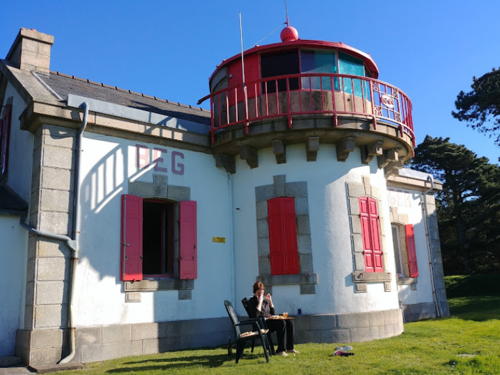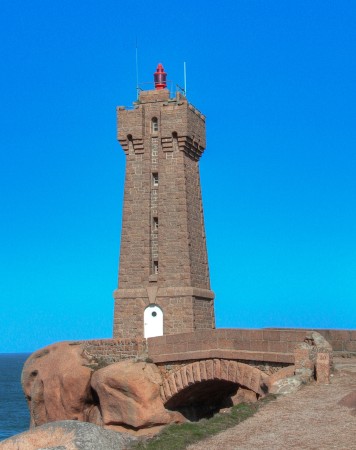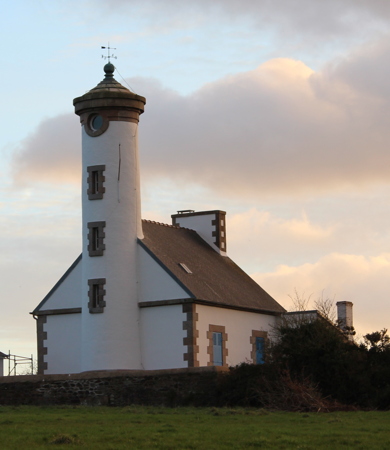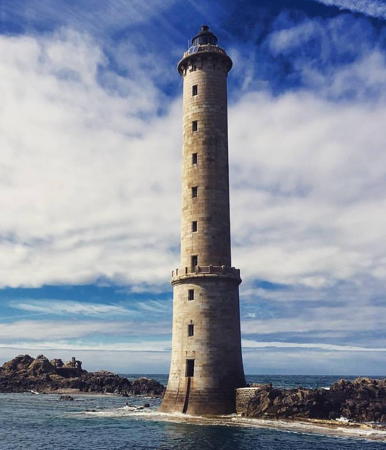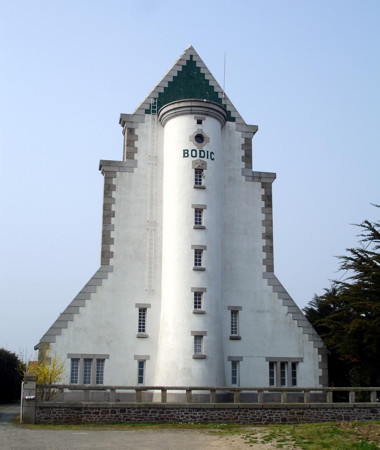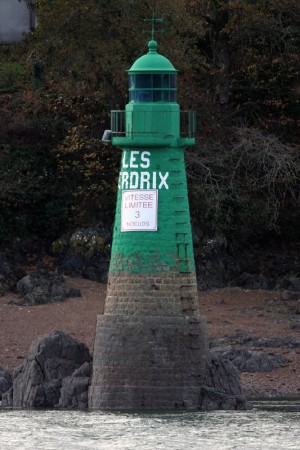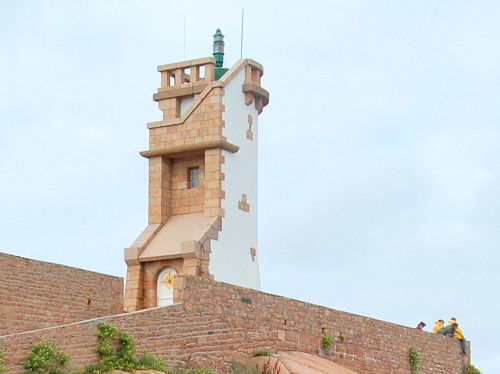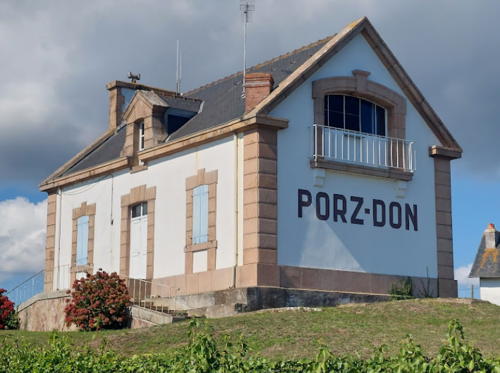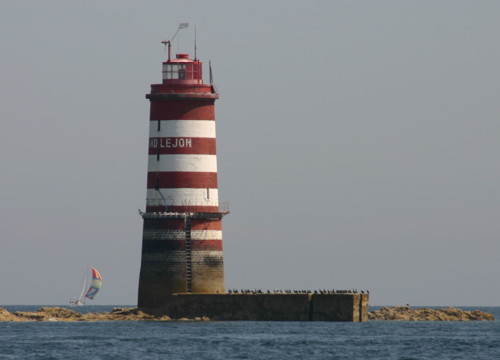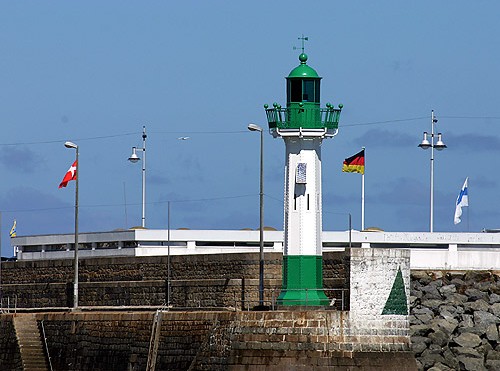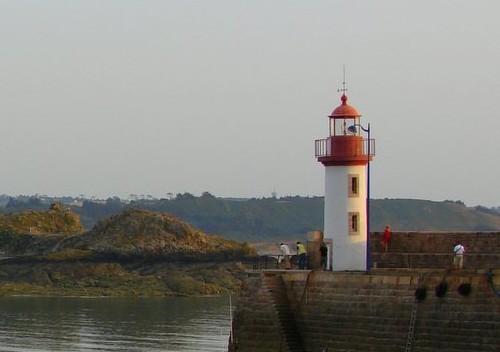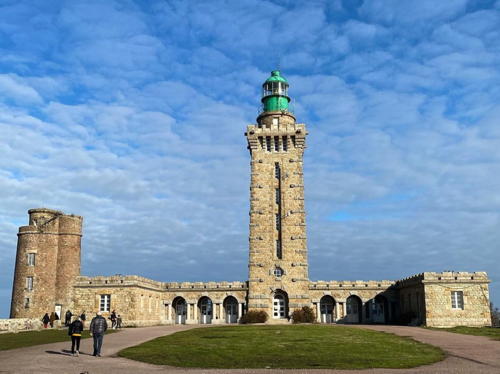France (officially the French Republic, République française) has coasts facing south on the Mediterranean Sea, west on the open Atlantic Ocean, and north on the English Channel (La Manche in French). Long a leader in lighthouse design, France has scores of famous and historic lighthouses. And it was a French engineer and physicist, Augustin-Jean Fresnel (1788-1837), who invented the powerful and beautiful lenses used in lighthouses around the world.
The old French province of Bretagne (Brittany) occupies a peninsula at the northwestern corner of France, separating La Manche (the English Channel from the Golfe de Gascogne (Bay of Biscay). Like Wales, Bretagne is an ancient Celtic country that maintained its independence until the end of the fifteenth century. Today it is divided into four départements of the French Republic. This page includes lighthouses of the department of Côtes d'Armor facing north on La Manche. Ar mor means "the sea" in Breton, so the name of the département means "coast of the sea."
The French word for a lighthouse, phare, is often reserved for the larger coastal lighthouses; a smaller light or harbor light is called a feu (literally "fire," but here meaning "light") or a balise (beacon). The front light of a range (alignement) is the feu antérieur and the rear light is the feu postérieur. In French île is an island, cap is a cape, pointe is a promontory or point of land, roche is a rock, récife is a reef, baie is a bay, estuaire is an estuary or inlet, détroit is a strait, rivière is a river, and havre is a harbor. The Breton word for a lighthouse is tour-tan; enez is an island, and men is a rock or reef.
Aids to navigation in France are maintained by the Bureau des Phares et Balises, an agency of the Direction des Affaires Maritimes (Directorate of Maritime Affairs). The Directorate has four regional offices (called Directions Interrégionale de la Mer, or DIRM) at Le Havre, Nantes, Bordeaux, and Marseille. Lights in Brittany are managed by the DIRM Nord-Atlantique - Manche Ouest (DIRM-NAMO) at Nantes.
ARLHS numbers are from the ARLHS World List of Lights. FR numbers are the French light list numbers, where known. Admiralty numbers are from volume A of the Admiralty List of Lights & Fog Signals. U.S. NGA List numbers are from Publication 114.
- General Sources
- Les Sentinelles des Mers - France - Bretagne
- Photos and information posted by Guy Detienne.
- Le Phare à travers le Monde
- A large, well known site maintained by Alain Guyomard and Robert Carceller.
- Lighthouses of Bretagne
- Excellent photos by Marc de Kleijn.
- Leuchttürme.net - Frankreich
- Photos and notes by Malte Werning.
- Lighthouses in Côtes-d'Armor
- Photos available from Wikimedia.
- France Lighthouses
- Aerial photos posted by Marinas.com.
- Online List of Lights - France North Coast
- Photos by various photographers posted by Alexander Trabas. Many photos for France are by Capt. Peter Mosselberger ("Capt. Peter").
- Phareland, le Site des Phares de France
- This comprehensive site has good photos and information about the major lighthouses.
- Société Nationale pour le Patrimoine des Phares et Balises (S.N.P.B.)
- The French national lighthouse preservation organization.
- Französische Leuchttürme
- Historic photos and postcard images posted by Klaus Huelse.
- GPSNavigationCharts
- Navigation chart information for Côtes d'Armor.
- Navionics Charts
- Navigation chart for Côtes d'Armor.

Grand Phare des Roches-Douvres, August 2008
Flickr Creative Commons photo by Clément Delafargue
